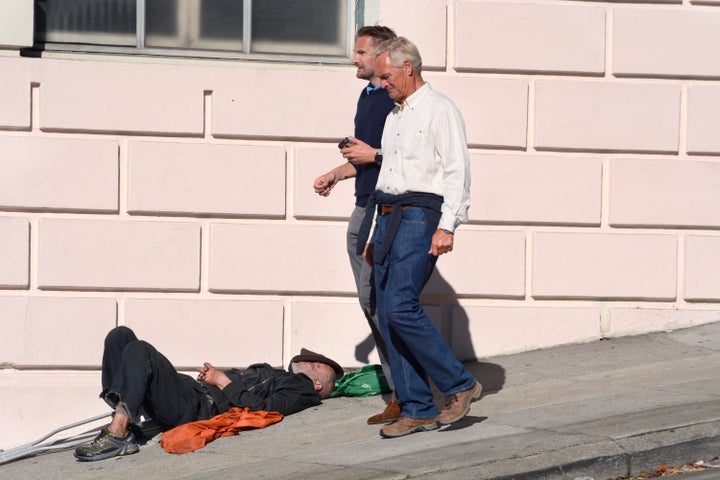The homelessness crisis in San Francisco has reached new levels as the number of homeless residents in the city ballooned by 17% since 2017, according to new figures in a federal count.
On a given night in January 2019, there were just over 8,000 homeless people in San Francisco ― up from about 6,800 people in 2017, per initial results released Thursday in a point-in-time count for the Department of Housing and Urban Development.
Notably, there was an increase in people living “unsheltered” ― or in places unsuitable for human habitation, like the streets, abandoned buildings or cars ― which was driven largely by more people living in their vehicles, according to Mayor London Breed’s office.
It’s been 15 years since San Francisco last counted more than 8,000 people among its homeless residents, reported the San Francisco Chronicle.
Other regions in the San Francisco Bay Area also showed a steep climb in homelessness, with Oakland’s Alameda county counting more than 8,000 people sleeping outside or in shelters, up from about 5,600 in 2017 ― or a 43% rise over two years.
Jennifer Friedenbach, executive director of local advocacy group the Coalition on Homelessness, told HuffPost that “real estate speculation” and “flat income for poor people” were major contributors to the increase in homelessness in the area.
“The cost of housing hasn’t gone down, so why does anyone expect that the amount of people experiencing homelessness would go down?” tweeted Kelley Cutler, an organizer with the group.

A final report of the 2019 federal homelessness count for cities nationwide will come out in July.
Amid the nation’s affordable housing crisis, California is one of the states with the worst rates of homelessness. On a single day in January 2018, more than 500,000 people were homeless nationwide, according to a HUD report ― and almost a quarter lived in California alone.
Preliminary numbers from other regions of California also show steep rises in homelessness, with Orange and San Bernadino counties in the South also showing double-digit increases in homelessness, per the Los Angeles Times.
“The initial results of this count show we have more to do,” SF’s mayor Breed said in a release, noting the city needs to provide more shelter and other supports. “As I have been saying for years, we desperately need to build more housing, especially badly needed affordable housing and supportive housing, because we know that high housing costs contribute to an increase in homelessness.”
Breed called for regional and statewide solutions to address the crisis, and noted she would “continue the progress being made” in her city to open over 300 new shelter beds this year, another 500 beds in 2020, as well as 300 new units of supportive housing in 2019.
Meanwhile Gov. Gavin Newsom (D) proposed in his revised budget last week around $1 billion to tackle homelessness ― though the budget still has to be approved by state legislators.
Last month, a homeless shelter and navigation center in a wealthy area of San Francisco was finally given the OK, after some more affluent residents had mounted a GoFundMe campaign to combat its being built in their neighborhood.
Meanwhile, drivers with ride-hailing company Uber ― which is based in San Francisco ― protested in the Bay Area city and other cities nationwide earlier this month, demanding higher pay and better working conditions. The protest took place ahead of the company’s initial public offering, in which its value was pegged at about $69 billion.
“After I did my taxes, I was operating below minimum wage,” 35-year-old Uber and Lyft driver Mostafa Maklad told HuffPost. Maklad studies at City College of San Francisco during the day and drives at night, pulling 40- to 50-hour weeks. “They don’t offer us benefits or health care or insurance ― and they don’t even pay us enough to afford paying that for ourselves,” he added.
Maklad struggles to afford housing in San Francisco and currently lives with six other people in a two-bedroom apartment.

